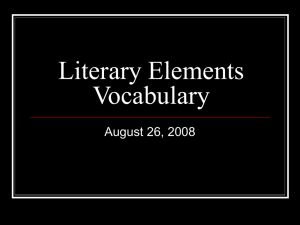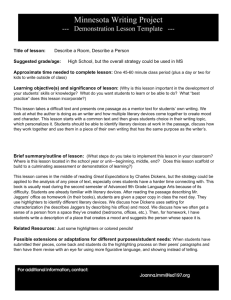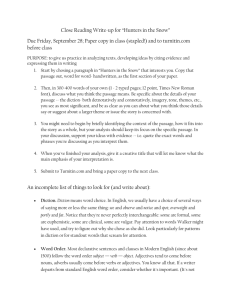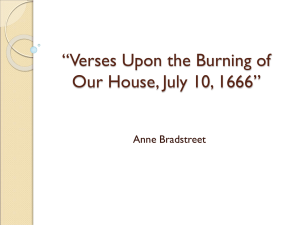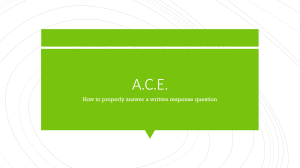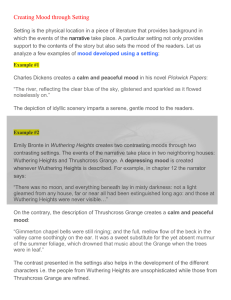Study Guide - First Semester Test
advertisement
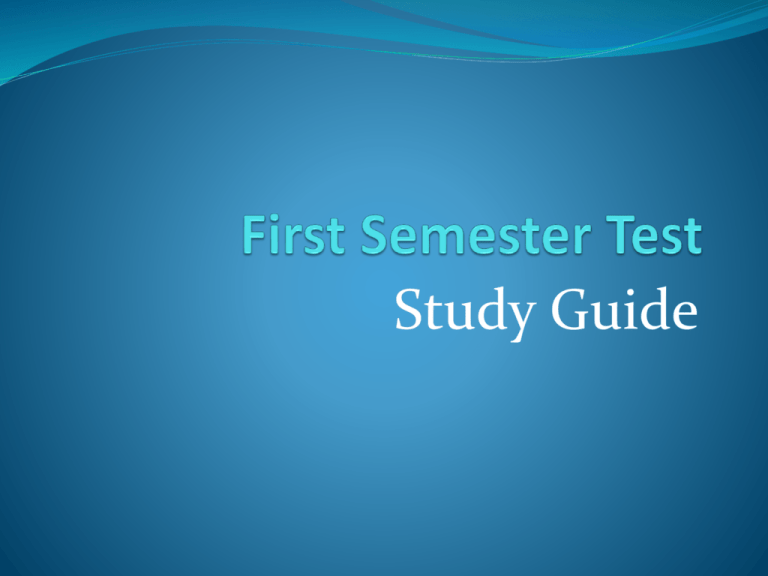
Study Guide What is the setting of a story? The setting of a story answers the questions of where and when the story takes place. What is the conflict of a story? The conflict is the driving force behind the plot. There is external conflict which is the struggle between a character and an outside force such as nature or another character. There is also internal conflict which is the psychological struggle within the mind of the dramatic character. What is the resolution of a story? The resolution is the ending of the story. It happens after the climax. It is when you learn what happens to the characters aster the conflict is resolved. What is a Protagonist? The leading character, hero or heroine of a drama or other literary work An advocate for a political cause, social reform or leader of a movement What is an Antagonist? A person who is opposed to struggles against or competes with another an opponent an adversary the enemy of the hero. Mood The mood is the feeling or atmosphere perceived by the reader. All choices for setting, images, objects and details create a mood. sequence The order in which events take place. How do you determine the main idea of a passage? Begin identifying the topic sentences of separate paragraphs and making inferences by figuring out the author’s purpose. What are supporting details of the main idea? Supporting details are the five W’s and H of the main idea. ~ Who ~ What ~ Where ~ Where ~ Why ~ How What are context clues? Context clues help you figure out the meaning of unknown words in a passage. To summarize means to: Shorten a passage in your own words. How is a prefix used? It is placed at the beginning of a word to change the meaning of a word. How is a suffix used? It is placed at the end of a word to change the meaning of a word. What are text features? Text features help the reader move through the text and provide additional information to help students comprehend the content. Print Features guide readers through patterns of organization. Table of Contents Index Glossary Preface Pronunciation Guide Appendix Organizational Aids help readers find important information Bold Print Colored Print Italics Bullets Titles Headings Subheadings Captions Labels Sidebars Graphic Aids represent information in some specific way. Diagrams Flow Charts Sketches Comparisons Graphs Figures Maps Charts/Tables Overlays Time-lines Illustrations expand the meaning of the text. Photos Drawings Magnification
